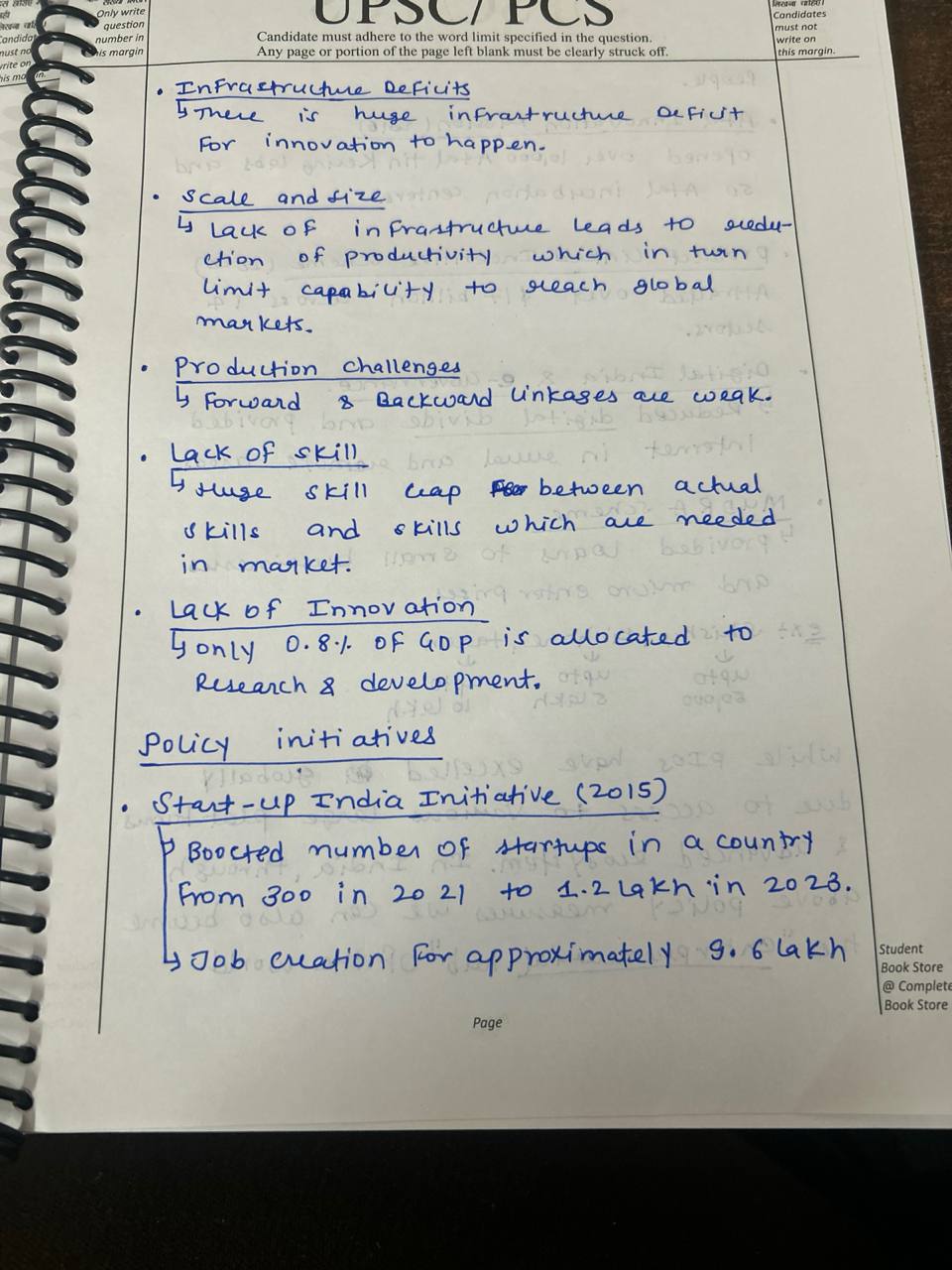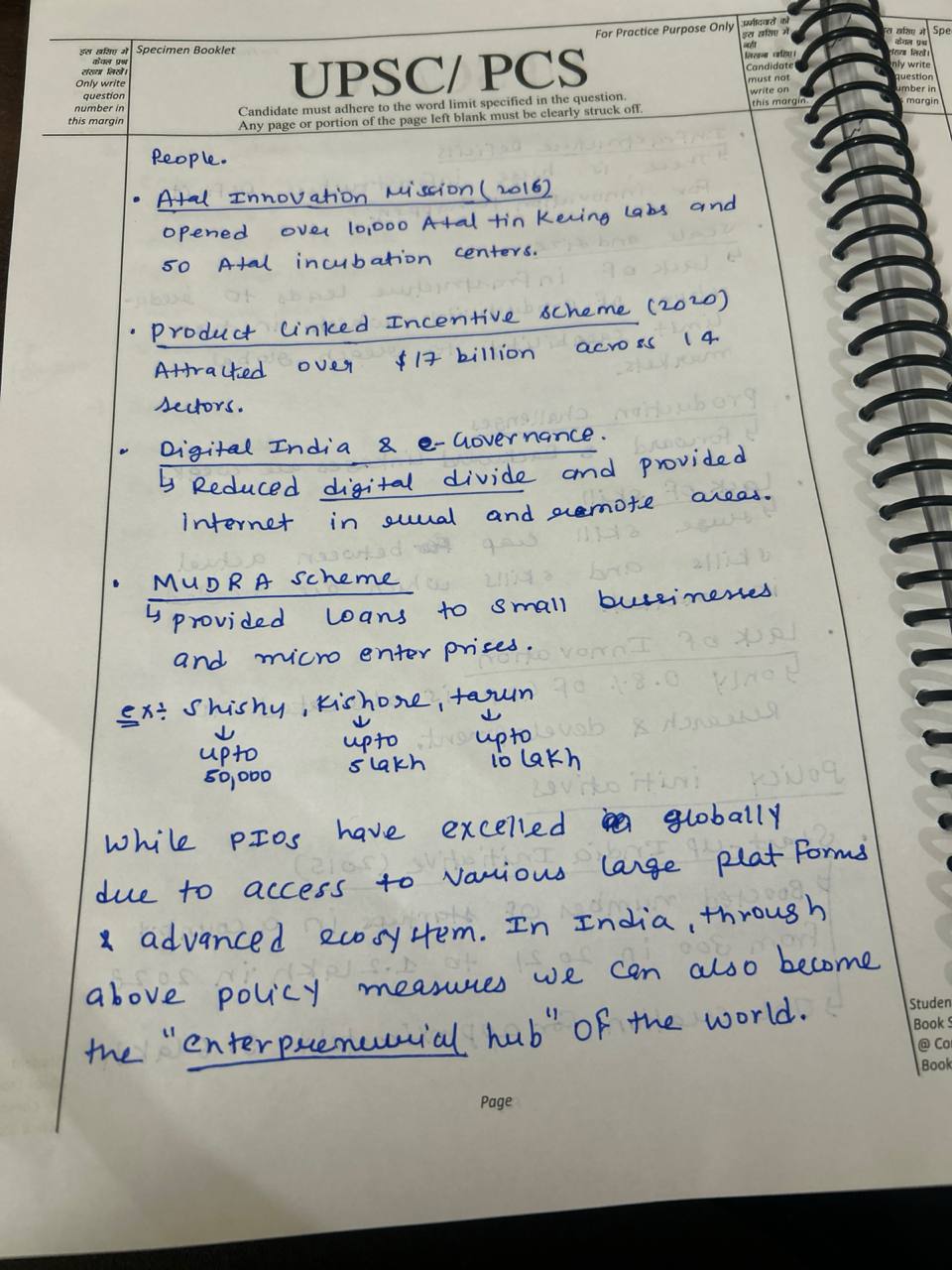Roadmap for Answer Writing 1. Introduction Objective: Introduce the concept of inclusive growth and its significance. Key Definitions: Inclusive Growth: Economic growth that benefits all sections of society (Source: OECD). Sustainable Development: Development that meets present needs without compromising future generations (Source: UN Brundtland Commission, ...
The Production Linked Incentive (PLI) Scheme was launched in 2020 by the Union Government in three key sectors (mobile manufacturing and electric components, pharmaceuticals and medical device manufacturing) and was later extended to 11 other key sectors with a budget outlay of Rs 1970 billion to crRead more
The Production Linked Incentive (PLI) Scheme was launched in 2020 by the Union Government in three key sectors (mobile manufacturing and electric components, pharmaceuticals and medical device manufacturing) and was later extended to 11 other key sectors with a budget outlay of Rs 1970 billion to create national manufacturing champions and generate employment opportunities for the country’s youth. The minimum production in India as a result of PLI Schemes is expected to be over US$ 500 billion in 5 years.
Role in promoting Atmanirbhar Bharat Mission:
- Creation of large-scale manufacturing capacity: The incentives under this scheme are directly proportional to production capacity/ incremental turnover. Hence, it will help develop large- scale manufacturing facilities and better industrial infrastructure, thus benefiting the overall supply chain ecosystem.
- Import substitution and export promotion: The PLI scheme aims to reduce the gap between India’s highly skewed import-export basket, which is mainly characterized by heavy imports of finished goods. The PLI schemes will promote domestic manufacturing of goods, thereby reducing our dependence on imports and help in expanding the quantum of exports from India in the long term.
- Technology transfer and skill development: The PLI Scheme will help attract foreign investment in India and along with that the advanced technology and expertise thus helping in skill development of our workforce.
- Focus on sunrise and strategic sectors: The PLI scheme covers new growing sectors such as drones and drone components, advanced chemistry cell batteries, Electronics and IT, Pharma etc. Thus, it will help India become future ready.
Challenges in realising these objectives:
- India becoming an assembly unit of imported parts: It is feared that the PLI scheme might degenerate the manufacturing units in India into the assembly of the imported parts. For example, the scheme aims to promote production of Air Conditioners in India, but the critical parts like compressors, valves and coils are being imported.
- Lack of research and development in India: The incentives under this scheme are linked to incremental sales of products manufactured in India, but lack of focus on R&D by the Indian private industry is the major structural weakness. For example, the largest share of value addition accrues the patent owners and the patent rights are kept abroad.
- Possible challenge in WTO: Earlier, Merchandise Exports from India Scheme (MEIS) was challenged in WTO for violation of the WTO Agreement on Subsidies and Countervailing Measures (SCM Agreement) and the decision was not favourable for India. If the goods manufactured under the PLI scheme significantly impacts global market prices then it might be challenged in WTO as well.
- Lacks long term approach: It is being argued that the short-term fiscal PLI incentives cannot overcome the lack of competitiveness in the long run.
Since its launch, the PLI Scheme has attracted much attention and various multinational firms are showing interest in investing in India under this scheme. Going forward, the government needs to ensure that the momentum gained by the scheme is sustained for a long-term growth.
See less



Model Answer Introduction Inclusive growth is defined by the OECD as economic growth that benefits all sections of society and creates opportunities for everyone. The UN Brundtland Commission's report, "Our Common Future" (1987), emphasizes sustainable development as meeting present needs without coRead more
Model Answer
Introduction
Inclusive growth is defined by the OECD as economic growth that benefits all sections of society and creates opportunities for everyone. The UN Brundtland Commission’s report, “Our Common Future” (1987), emphasizes sustainable development as meeting present needs without compromising future generations. This dual focus underscores the relationship between inclusiveness and sustainability in growth strategies.
The Essence of Inclusive Growth
Inclusive growth embodies the principle that when economic growth benefits all segments of the population, it reduces poverty and generates employment without jeopardizing future needs.
1. Long-term Perspective
Inclusive growth policies prioritize access to essential services such as education, healthcare, and housing. These investments lead to long-term gains in societal development and economic stability.
2. Wealth Distribution and Demand Creation
By promoting productive employment rather than merely redistributing income, inclusive growth fosters a wider distribution of wealth. This approach creates domestic demand, driving sustainable economic growth over time. For example, creating jobs in sustainable sectors like textiles and leather, which utilize biodegradable materials, shows a commitment to both inclusiveness and environmental sustainability.
3. Addressing Structural Issues
Inclusive growth tackles fundamental societal and economic problems, laying strong foundations for sustainable transformations. Initiatives like the Jan Dhan Yojana have successfully integrated unbanked populations into the financial system, enhancing savings and investments, which initiates a virtuous economic cycle.
4. Economic Resilience
By promoting inclusiveness, economies become more resilient to shocks, making growth sustainable in the long run. This resilience is crucial for maintaining stability during economic fluctuations.
5. Environmental Sustainability
Inclusive growth policies also aim to protect natural resources. As wealth is distributed more equitably, communities are likely to shift from polluting energy sources to cleaner alternatives, aligning economic activities with environmental sustainability.
Conclusion
Inclusiveness and sustainability are intrinsically linked within the framework of inclusive growth. By ensuring that the benefits of economic progress are shared equitably and that growth respects environmental boundaries, inclusive growth strategies contribute to achieving the Sustainable Development Goals (SDGs). This holistic approach is essential for fostering a resilient, equitable, and sustainable future.
See less